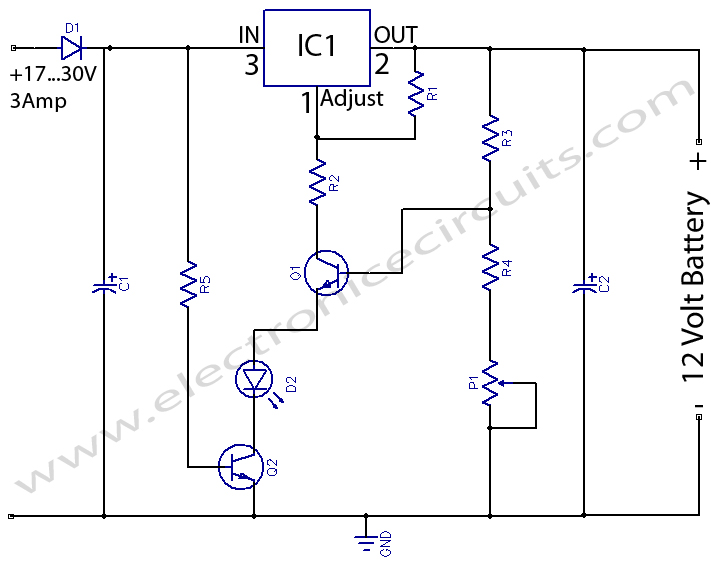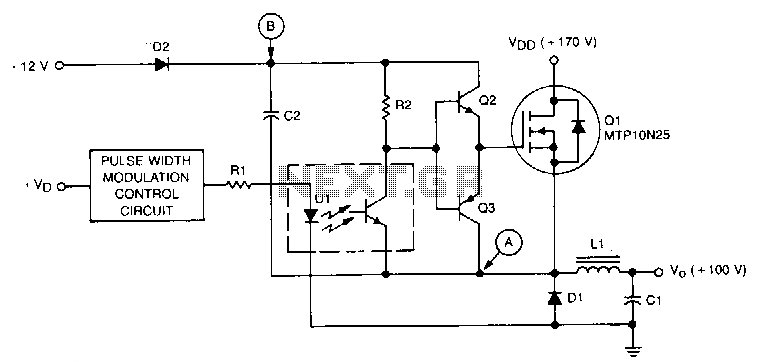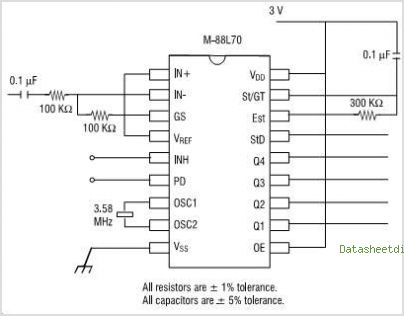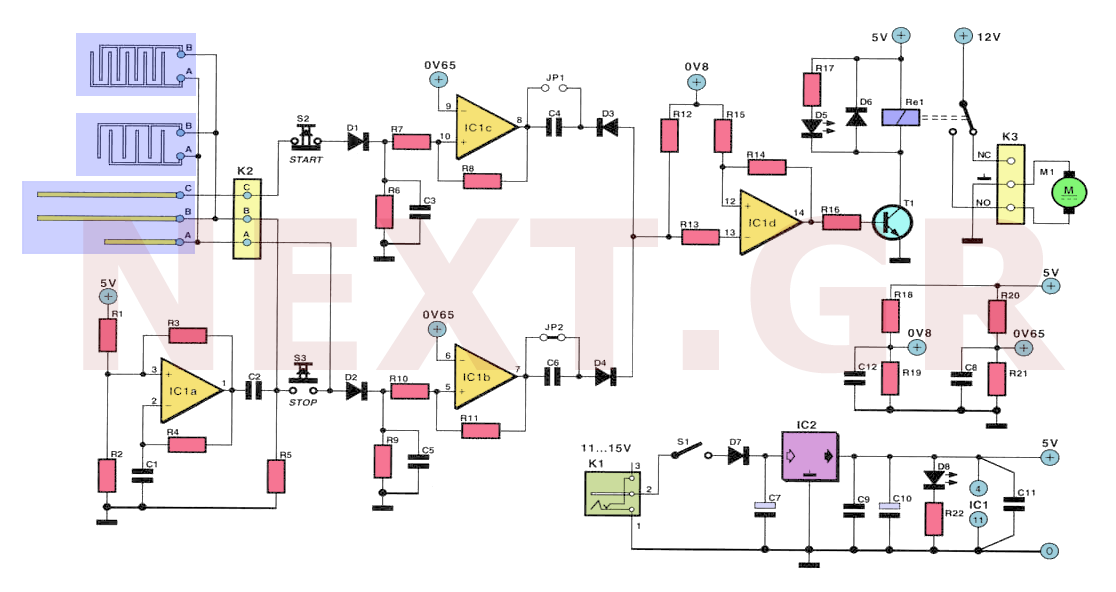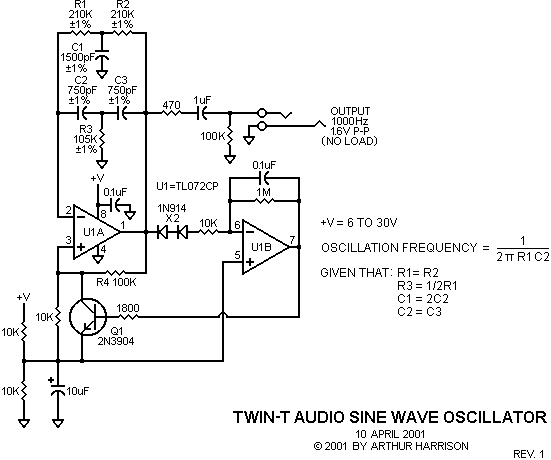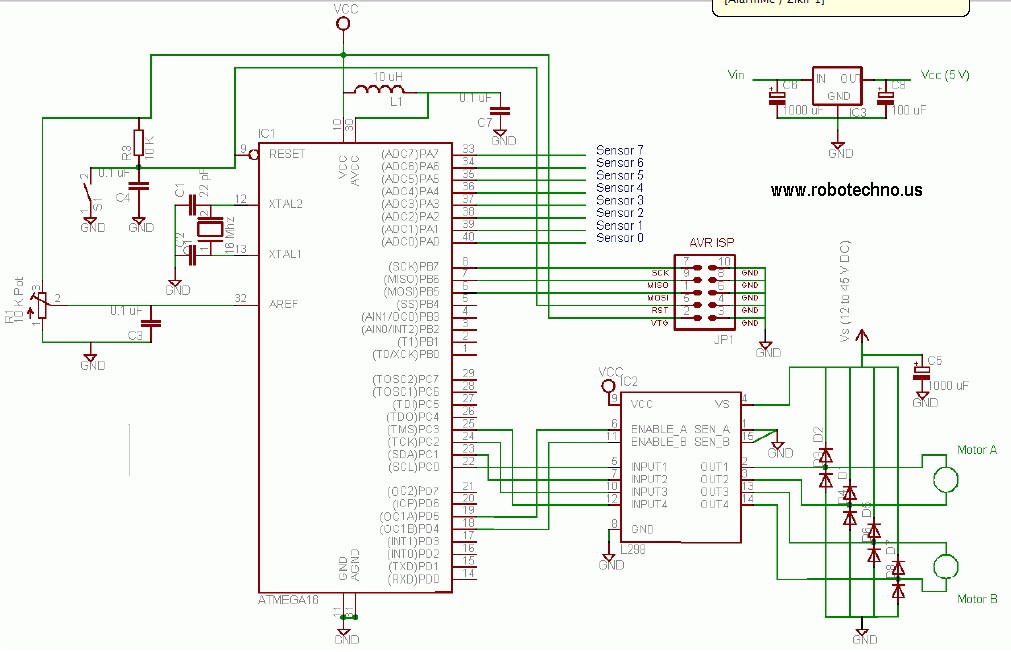
Precision Receiver Battery Low Voltage Alarms
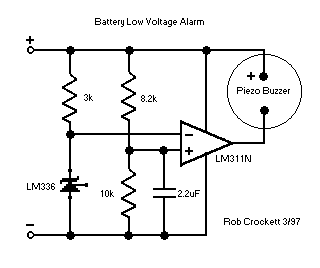
Flying hand launch gliders necessitate the use of small-capacity receiver NiCad battery packs. While these lightweight packs are advantageous, they have the significant drawback of quickly depleting. Although careful timing of flights can be employed, it often results in either a crash when the plane stops functioning or utilizing only a fraction of the already limited battery capacity. Charging the battery in a slightly suboptimal manner can lead to failure and subsequent crashes. This device allows for the effective use of a small mA pack, enabling the full utilization of the battery's capacity. The design consists of seven components on a single-sided PCB. With a 6-inch connector, the entire assembly weighs approximately 0.2 ounces. An alarm is triggered when the voltage drops to or below 4.5V, with the circuit consuming 2.4-2.7 mA in idle mode and 5.6 mA when the alarm is active. In a typical Hitec system, a receiver along with two servos draws an average of 75-100 mA during operation. The LM336 and a 3k resistor provide a precise 2.5V reference voltage, while two additional resistors form a voltage divider to sample the voltage. The LM311 acts as a voltage comparator, activating the buzzer when the sampled voltage falls below the reference. Given that servos draw current abruptly and intermittently, the ambient battery voltage experiences a series of low voltage spikes. A capacitor, which was not included in the original design, helps to smooth these spikes, preventing the alarm from sounding with every servo movement. These inverted voltage spikes are less pronounced with larger capacity batteries, making the capacitor potentially unnecessary. Although complete voltage smoothing is possible, the chirping serves as a continuous and early indicator of battery status. With this circuit, the alarm chirps while operating both servos in a receiver/two servo system when a 150 mA battery is about half discharged, chirps with any servo motion when nearly fully discharged, and continuously alarms when approximately five minutes of flying time remains. With a larger capacity battery, this sequence occurs much closer to complete discharge; thus, a smaller capacitor (e.g., 1 µF or 0.1 µF) may suffice. Initial comparisons with measured voltages are essential for calibration to the specific system. The divider resistors can be adjusted to set a higher or lower voltage alarm using the formula Vout = Vin(R2/(R1 + R2)), where Vout = 2.5V, Vin is the selected alarm voltage, R1 is the positive side, and R2 is the negative side. Note that the LM336 has three pins, but only two are utilized (the third can be broken off). A battery or servo connector should be soldered to the board with proper positive and negative orientations, and the connector can be plugged into an unused slot in the receiver.
The circuit described integrates several essential components that work together to monitor battery voltage levels effectively. The LM336 voltage reference ensures a stable 2.5V output, which is crucial for accurate voltage comparisons. The LM311 comparator's role is vital, as it continuously monitors the sampled voltage against the reference voltage, providing timely alerts to the user. The use of a voltage divider allows for flexibility in setting the alarm threshold, accommodating various battery capacities and user preferences.
The addition of a capacitor, although not part of the initial design, can significantly enhance the circuit's performance by filtering out transient voltage spikes caused by servo operation. This smoothing effect minimizes false alarms, allowing for a more reliable indication of the battery's state. The design's lightweight and compact nature makes it suitable for applications where weight is a critical factor, such as in hand launch gliders.
For optimal performance, it is recommended to conduct initial tests with the specific battery and servo configuration to calibrate the system accurately. Adjusting the resistor values in the voltage divider can tailor the alarm settings to meet the user's requirements, ensuring that the system provides adequate warnings before battery depletion occurs. This proactive approach to battery management enhances the reliability and safety of flying hand launch gliders, allowing for more enjoyable and less stressful flying experiences.Flying hand launch gliders means living with small capacity receiver NiCad battery packs. These small packs are light, but have the distinct disadvantage of rapidly depleting. You can carefully time your flights, but you end up either crashing when your plane seizes or using only a portion of the already small capacity of the battery. If you charg e the battery in a slightly suboptimal fashion, your plane dies and bites the dirt (done that, crashed). This devices will allow you to use a small mA pack and use the full capacity of your battery. This device of my design uses seven componants on a single side PC board. With a 6 inch connector, the whole thing weighs about 0. 2 oz. The alarm sounds with a voltage at or below 4. 5v, and the circuit draws 2. 4-2. 7 mA when quiet and 5. 6mA with the alarm (in my Hitec system, a receiver and two servos draw an average 75-100mA when flying).
The LM336 and 3k resistor provide a precision reference 2. 5 volts, and the two other resistors are a voltage divider that provide the sample voltage. The LM311 is a voltage comparator, and powers the buzzer when the sample voltage crosses the reference. Since servos draw current abruptly and intermittantly, the ambient battery voltage is puncuated by a series of low voltage spikes.
The capacitor (not in the original design in the picture) smooths these spikes somewhat so that the alarm does not chirp with every servo motion. These inverted voltage spikes are not so pronounced with larger capacity batteries; the capacitor may not always be be needed.
While it is possible to smooth the voltage completely, this chirping provides a continuous and early indication of battery voltage. With the circuit here, the alarm chirps while slewing both servos of a reciever/two servo system when a 150mA battery is about half discharged, chirps with any servo motion when near completely discharged, and alarms continuously with about 5 minutes of flying time left.
With a larger capacity battery, the sequence occurrs much nearer to complete discharge-perhaps no capacitor or a smaller one (say 1uf or 0. 1uf) would do-and initial comparison with your measured voltages would be important to calibrate to your system.
You can adjust the divider resistors for a higher or lower voltage alarm: Vout=Vin(R2/(R1+R2) where Vout=2. 5v and Vin is your selected alarm voltage, and R1 is the positive side and R2 is the negative side. Note that the LM336 has three pins and you only use two (break off the third). Solder a battery or servo connector to the board with positive and negative as shown, and plug the connector into an unused slot in your receiver.
🔗 External reference
The circuit described integrates several essential components that work together to monitor battery voltage levels effectively. The LM336 voltage reference ensures a stable 2.5V output, which is crucial for accurate voltage comparisons. The LM311 comparator's role is vital, as it continuously monitors the sampled voltage against the reference voltage, providing timely alerts to the user. The use of a voltage divider allows for flexibility in setting the alarm threshold, accommodating various battery capacities and user preferences.
The addition of a capacitor, although not part of the initial design, can significantly enhance the circuit's performance by filtering out transient voltage spikes caused by servo operation. This smoothing effect minimizes false alarms, allowing for a more reliable indication of the battery's state. The design's lightweight and compact nature makes it suitable for applications where weight is a critical factor, such as in hand launch gliders.
For optimal performance, it is recommended to conduct initial tests with the specific battery and servo configuration to calibrate the system accurately. Adjusting the resistor values in the voltage divider can tailor the alarm settings to meet the user's requirements, ensuring that the system provides adequate warnings before battery depletion occurs. This proactive approach to battery management enhances the reliability and safety of flying hand launch gliders, allowing for more enjoyable and less stressful flying experiences.Flying hand launch gliders means living with small capacity receiver NiCad battery packs. These small packs are light, but have the distinct disadvantage of rapidly depleting. You can carefully time your flights, but you end up either crashing when your plane seizes or using only a portion of the already small capacity of the battery. If you charg e the battery in a slightly suboptimal fashion, your plane dies and bites the dirt (done that, crashed). This devices will allow you to use a small mA pack and use the full capacity of your battery. This device of my design uses seven componants on a single side PC board. With a 6 inch connector, the whole thing weighs about 0. 2 oz. The alarm sounds with a voltage at or below 4. 5v, and the circuit draws 2. 4-2. 7 mA when quiet and 5. 6mA with the alarm (in my Hitec system, a receiver and two servos draw an average 75-100mA when flying).
The LM336 and 3k resistor provide a precision reference 2. 5 volts, and the two other resistors are a voltage divider that provide the sample voltage. The LM311 is a voltage comparator, and powers the buzzer when the sample voltage crosses the reference. Since servos draw current abruptly and intermittantly, the ambient battery voltage is puncuated by a series of low voltage spikes.
The capacitor (not in the original design in the picture) smooths these spikes somewhat so that the alarm does not chirp with every servo motion. These inverted voltage spikes are not so pronounced with larger capacity batteries; the capacitor may not always be be needed.
While it is possible to smooth the voltage completely, this chirping provides a continuous and early indication of battery voltage. With the circuit here, the alarm chirps while slewing both servos of a reciever/two servo system when a 150mA battery is about half discharged, chirps with any servo motion when near completely discharged, and alarms continuously with about 5 minutes of flying time left.
With a larger capacity battery, the sequence occurrs much nearer to complete discharge-perhaps no capacitor or a smaller one (say 1uf or 0. 1uf) would do-and initial comparison with your measured voltages would be important to calibrate to your system.
You can adjust the divider resistors for a higher or lower voltage alarm: Vout=Vin(R2/(R1+R2) where Vout=2. 5v and Vin is your selected alarm voltage, and R1 is the positive side and R2 is the negative side. Note that the LM336 has three pins and you only use two (break off the third). Solder a battery or servo connector to the board with positive and negative as shown, and plug the connector into an unused slot in your receiver.
🔗 External reference
